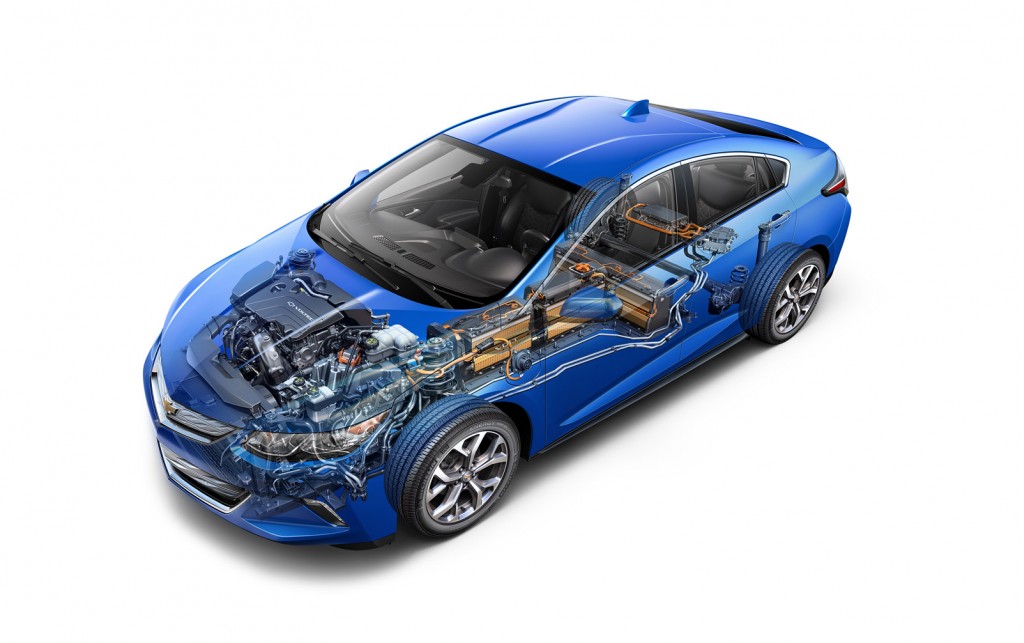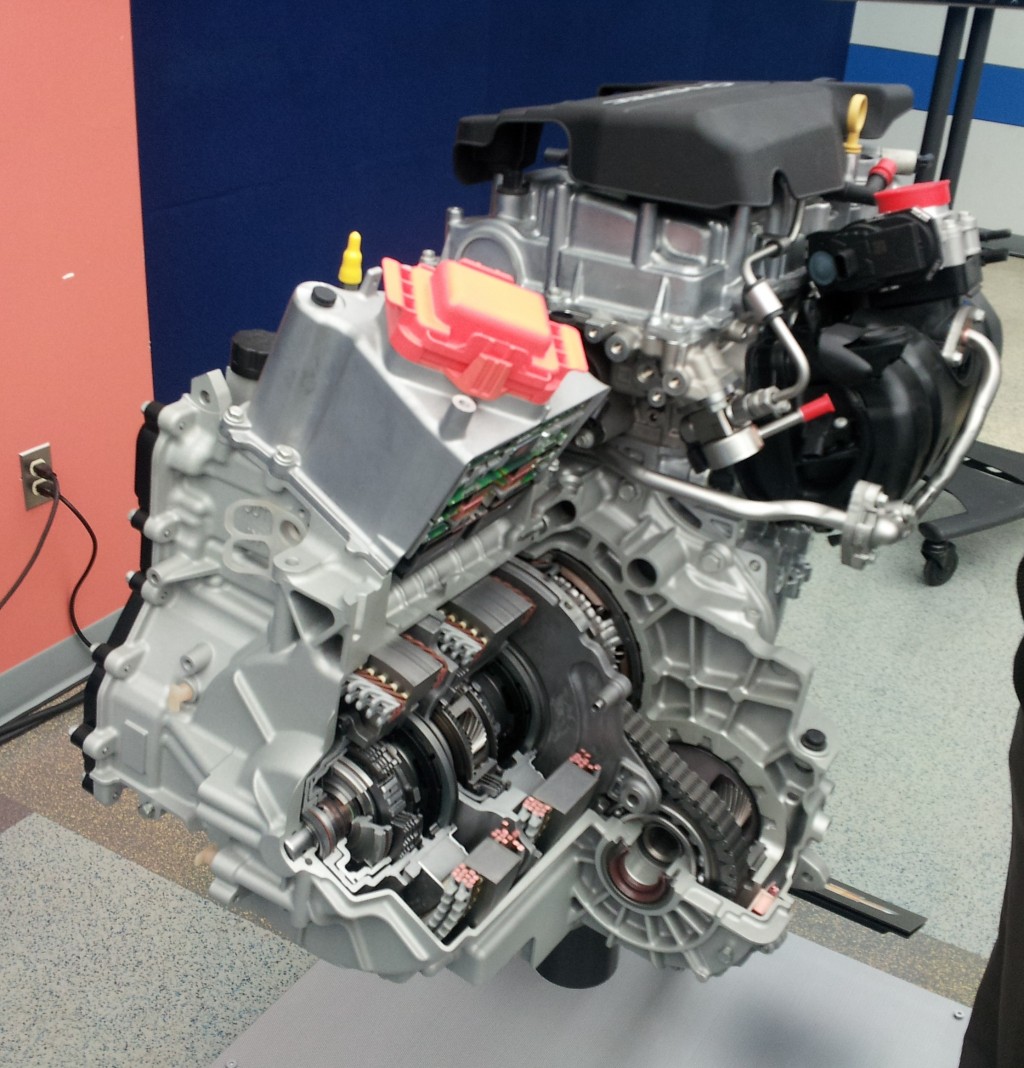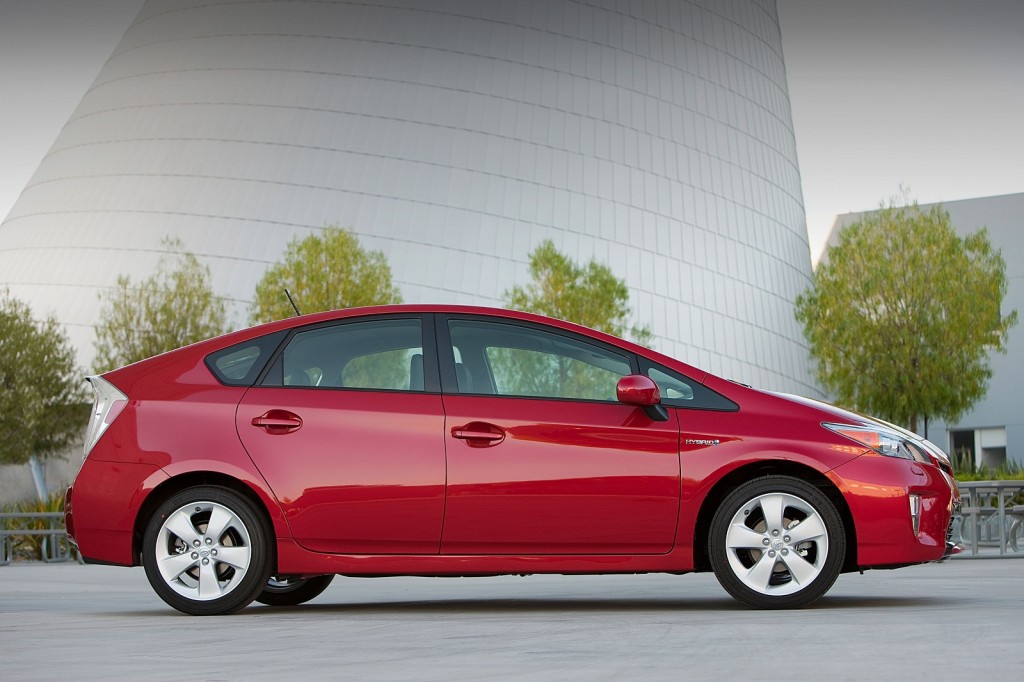
2016 Chevrolet Volt
At 50 miles, the 2016 Chevrolet Volt offers the longest range of any plug-in hybrid (though the range-extended BMW i3 electric car is rated at 72 miles).
Announced this week at the Detroit Auto Show, following an October technical briefing, the technology in the new Volt may turn out to hold some secrets.
DON'T MISS: 2016 Chevrolet Volt: 50-Mile Range, 41 MPG, Five Seats, All New (Photos)
First we need to revisit November 2012, when then-product chief Mary Barra (now GM's CEO) told journalists that the company planned to focus on plug-in electric cars and mild hybrids.
"We think plug-in technology will play an increasingly important role over the years to come," she said at the time.
As we now know, Barra was previewing the thoroughly updated 2016 Volt to come--and also the Chevrolet Bolt Concept she unveiled at the show directly after the new Volt.

2016 Chevrolet Volt
GM is clearly intending to be one of the world's foremost sellers of cars that plug in, whether plug-in hybrids or battery-electric vehicles.
Offering the 50-mile Volt in the second half of this year and adding a 200-mile Bolt just two years later would be an undeniable coup.
Barra said in 2012, however, that the company would also focus on its e-Assist mild-hybrid system, which has been less than a stellar success in the market place.
ALSO SEE: 2016 Chevy Volt: Bigger Battery, More Motor Power, New Range Extender Engine Details
Still, Barra's announcement left a crucial question unanswered: What would GM do to compete with conventional hybrids that don't plug in?
We now think that her statement that GM would concentrate on its Voltec system is the answer to that question: GM will use that drive unit, minus the plug-in hardware and the large battery pack, to offer one or more conventional hybrid vehicles.

2016 Chevrolet Volt powertrain detail - motor and power electronics unit advance briefing, Oct 2014
While sales of the aging Toyota Prius are falling, an all-new Prius will arrive for 2016--and both Ford and Hyundai plan their own dedicated hybrids as well.
We think that GM's plans to compete with those cars can be found under the hood of the new Chevy Volt.
The first Volt had one 111-kilowatt (149-horsepower) motor powering the wheels, and a separate 55-kw generator powered by its range-extending engine. It could also act as a motor to provide additional torque, though this was not widely discussed at the time.
The range-extending engine could also be clutched into the drive unit to provide supplemental torque to the traction motor under a limited set of operating circumstances, mostly at higher speeds.
The new Volt has two motor-generators, but they're now the same physical size, although with different outputs. The total drive power is again 111 kW (149 hp), with 294 lb-ft of torque.
MORE: 2016 Chevrolet Volt Video
One of the motors powers the front wheels, while the other acts as a 45-kW generator. Again, it can be used as a motor as well, providing supplemental torque to power the wheels--so that 111-kW total output now comes from the pair of motors.
GM engineers confirmed that the engine can again be clutched into the drive unit to add supplemental power as well.
The company so far has declined to provide detailed specifications of the various components. It also won't discuss the various operating modes of the system.
Those details, its engineers said, will appear in a series of papers released later this year for the Society of Automotive Engineers (SAE).

2016 Chevrolet Volt
Overall, Chevy says, the new Voltec drive unit is 100 pounds (45 kg) lighter than its predecessor, more powerful, and up to 12 percent more efficient.
With its power electronics mounted directly on the drive unit, the 2016 Volt no longer has so many orange high-voltage cables visible with the hood open.
The entire powertrain package, in fact, is smaller--enough so that the new Volt's designers were able to reduce the cowl height, giving the entire car a lower, sleeker, and less slab-sided appearance.
The new Voltec powertrain gets its energy from a liquid-cooled 18.4-kilowatt-hour lithium-ion battery pack in the familiar T-shape, again housed in the Volt's tunnel and under its rear seat.
Smaller battery, no plug?
So what does all this mean for future GM hybrids?
Well, suppose you removed all the plug-in gear and replaced the T-pack with a much smaller lithium-ion battery pack--of, say, 1.5 to 2 kilowatt-hours.

2010 Toyota Prius transaxle, at right, with larger, heavier transaxle from 2009 Prius at left
That setup suddenly looks rather a lot like what's in the Hybrid Synergy Drive system that powers today's Toyota Prius.
But GM's electric output of 111 kW is higher that of the two motor-generators in today's Prius, at 60 kW (80 hp) for the one used as a traction motor and 42 kW (56 hp) for the generator.
With a slightly larger battery, our putative GM hybrid could arguably run more often on electricity alone.
And if GM has learned anything from its experience with the first Volt, it's that drivers LOVE electric power that comes without any accompanying engine noise or vibration.

2015 Toyota Prius Liftback
Facing off against Toyota
Could a Voltec-based conventional hybrid system provide more electric-only driving with similar fuel economy to Toyota's hybrid lineup?
Arguably, yes.
What vehicles might it appear in? We doubt Chevy will do its own dedicated hybrid, a la Prius.
Instead, it will likely reserve the special bodies for its signature plug-in vehicles: the Volt today, the Bolt (hopefully renamed) in 2017.
But we can certainly imagine this theoretical hybrid system in the next generation of Malibu, around 2017, to compete head-to-head with the hybrid versions of its mid-size sedan competitors: the Ford Fusion, Honda Accord, Hyundai Sonata, Kia Optima, and Toyota Camry.

2013 Ford Fusion Hybrid, test drive, Catskill Mountains, NY, Mar 2013
All of those models except the Camry have or will have plug-in hybrid variants as well--which should be a snap for the GM engineers behind our theoretical 2017 or 2018 Malibu Hybrid.
Just think of it as the Volt alternative, with less electric range, but conventional styling, more interior space, and real seating for five (no "occasional seating position").
This is all speculation, of course.
But it would provide the answer to a question that has bedeviled analysts, engineers, and auto writers since Barra's announcement: How can GM not offer conventional hybrids?
The answer is that we suspect the company will, based on a Voltec system minus the plug.
It's just not saying so.
Yet.
_______________________________________________













